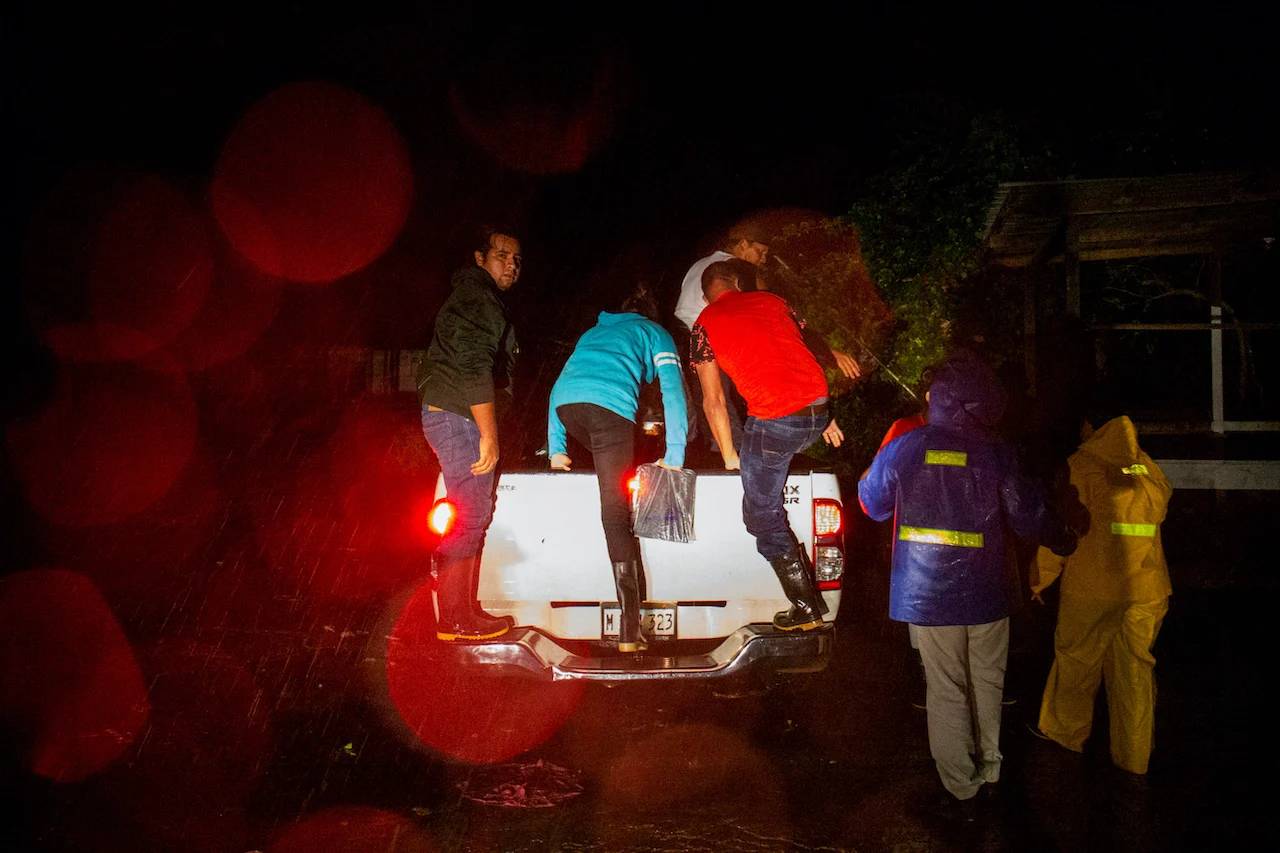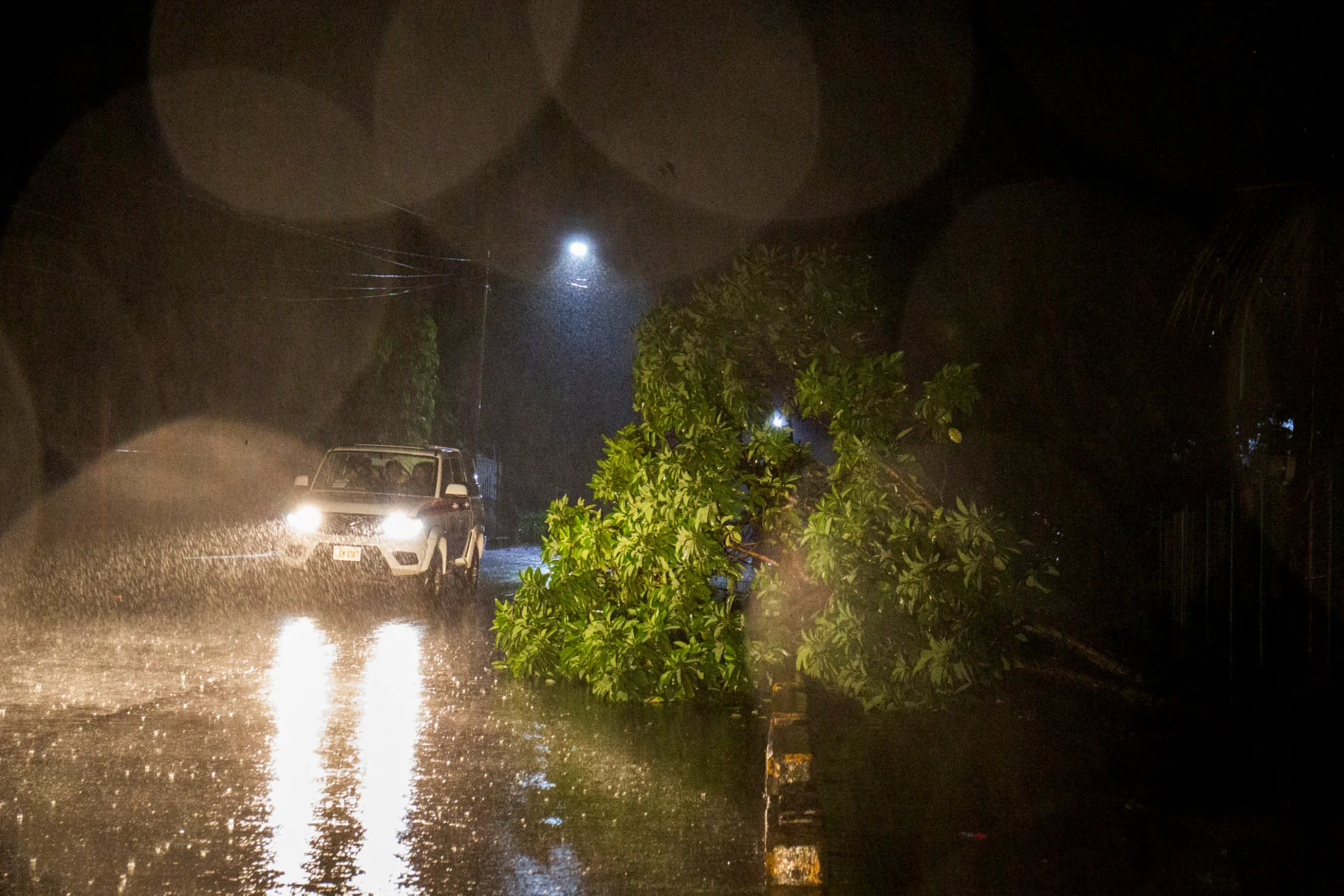
Tropical Storm Julia emerges over Pacific after crossing Nicaragua
About one million residents of Nicaragua's coastal region lost power and internet due to fallen lines as well as a decision by the government to cut electricity for safety reasons, said Vice President Rosario Murillo, according to local media.
MEXICO CITY (Reuters) - Tropical storm Julia emerged over the Eastern Pacific on Sunday evening after pummelling Nicaragua with rain and winds that damaged hundreds of homes but left no reported casualties in that country, according to government officials.
Local authorities attributed three deaths in Honduras to the storm, including a young woman and a four-year-old boy who died after a boat capsized near the border with Nicaragua on Saturday night and a 22-year-old woman who was swept away by flood waters on Sunday in the north.
MUST READ: Everything you need to get equipped for a magical fall
The storm made landfall on the Caribbean coast of Nicaragua early on Sunday near Laguna de Perlas and by 6 p.m. local time (0000 GMT) its center was over the Pacific around 135 miles (220 kilometers) southeast of El Salvador's capital, the U.S. National Hurricane Center (NHC) said.
It is expected to move north along the coasts of Honduras, El Salvador and Guatemala on Sunday and Monday, according to the NHC.

People get into a pickup truck to be transported to a safe zone while Hurricane Julia hits the coasts with wind and rain, in Bluefields, Nicaragua October 8, 2022. REUTERS/Maynor Valenzuela
About one million residents of Nicaragua's coastal region lost power and internet due to fallen lines as well as a decision by the government to cut electricity for safety reasons, said Vice President Rosario Murillo, according to local media.
The Nicaraguan National Disaster System said in a tweet on Sunday that the entire country was under “red alert,” after heavy rains caused multiple rivers to flood.
Guillermo Gonzalez, director of Nicaragua's disaster system, told a press conference that Julia had not caused any fatalities in the country but that more than 13,000 families had been evacuated, more than 800 houses had been flooded and many roofs had been damaged.
“The event is not over,” Gonzalez said.
The NHC maintained its warning of the "risk of life-threatening flash floods and mudslides across Central America and Southern Mexico" through Tuesday.

People in a vehicle drive past a fallen tree after Hurricane Julia hits the coasts with wind and rain, in Bluefields, Nicaragua October 8, 2022. (REUTERS/Maynor Valenzuela)
Colombian President Gustavo Petro said on social media early on Sunday that Julia had left "light damage" in San Andres and Providencia, Colombian islands off the coast of Nicaragua.
In San Andres, heavy winds pulled tin roofs off houses, according to police captain Octavio Gutierrez. On Sunday, streets rang with the sound of handheld saws that police and locals used to clear fallen tree trunks and branches.
In high-risk zones in Honduras, authorities declared a red alert and called on residents to evacuate. Early on Sunday, Salvadorans prayed in city plazas after El Salvador President Nayib Bukele declared the day as a "National Day of Prayer," calling on citizens to "come together to pray and ask for God's protection."
As Julia moved north, Guatemala President Alejandro Giammattei said in a press conference late on Sunday that the storm had already resulted in three floods and one bridge collapse.
(Reporting by Jackie Botts and Aida Pelaez-Fernandez in Mexico City; Additional reporting by Luis Echeverria and Enrique Garcia in Guatemala City, Gustavo Palencia in Tegucigalpa, Herbert Villarraga and Nina Lopez in San Andres; Writing by Frances Kerry; Editing by Barbara Lewis, Matthew Lewis, Ana Nicolaci da Costa and Michael Perry)





